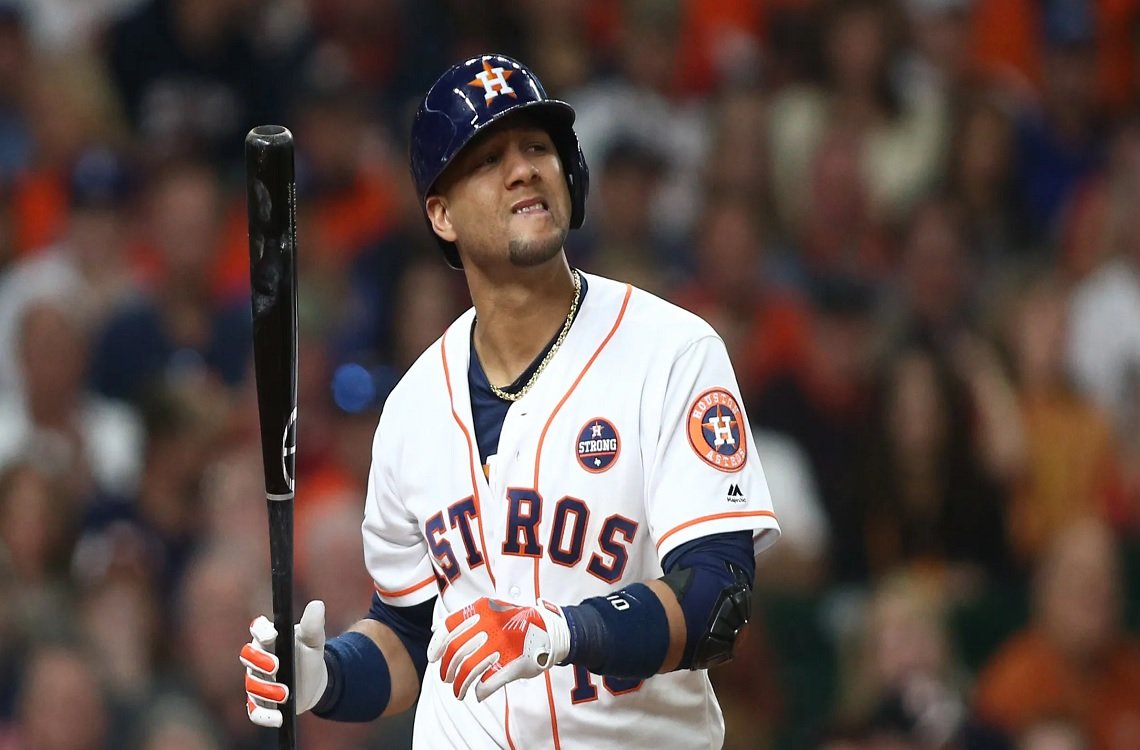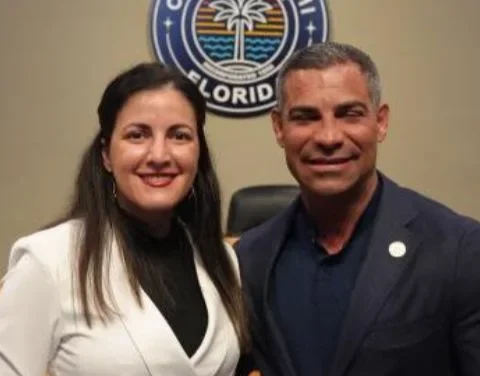After winning the batting title and the Gold Glove As the best first baseman in the American League in 2021, it was to be expected that Yulieski Gurriel would have many eyes on him for the start of the current MLB season. The defense of those awards and the media buzz that his figure always arouses, were enough to form the perfect storm around the 38-year-old from Sancti Spiritus, immersed in his seventh season in the Majors with the Houston Astros.
After three months of competition, that script has been fully fulfilled. Yulieski is the proper name of many debates on specialized sites, while on social networks he is showered with praise and criticism in equal parts for his actions. However, there is an unexpected element to consider in this great equation: Gurriel is not responding to the occasion, at least not with the wood.
Close to the middle of the season, the initialist has managed to establish himself as the twenty-fourth Cuban with the most RBIs (400) in MLB history and the second with more trailers since 2016 (only surpassed by “Pito” Abreu), but that has gone somewhat unnoticed due to his poor offensive performance.
To get an idea, Yulieski presents the worst indicators of his career in offensive average (.216), on-base percentage (.268), slugging (.369) and OPS (.637), even below the indicators he left in the shortened 2020 campaign, when he was a victim of the deeper and longer slump of their life. As if this were not enough, Baseball Reference projections indicate that this will be his weakest season in terms of run production.
The drop has been too significant, so we focus on analyzing some advanced metrics that offer us clues about the causes of the phenomenon.
* Let’s start with the basics: Yulieski isn’t hitting the ball hard. His average connection speed is 87.6 miles — the worst of his career — below the league average (88.4). That is clearly reflected in his Hard Hit rate (balls hit 95 miles or more), which has dropped considerably from what he achieved in 2021.
In his campaign as the leader of the American League hitters, Gurriel achieved 42% of connections that were considered Hard Hit, the second best mark of his life, but in 2022 that percentage has plummeted to 36.8, far from his career average (39.3).
* One thing leads to another: if you don’t hit the ball hard, it’s more difficult for your hits to reach the parameters required to achieve a positive impact. In the case of Yulieski, for example, in 2022 he has considerably increased his rate of fly balls with an exit angle greater than 40 degrees (so-called under), which hardly acquire the power and distance to become effective connections.
Right now, 33.3% of Gurriel’s hits have been fly balls with an exit angle greater than 40 degrees, which places him among the 20 major league hitters who produce the most connections of this type. As in the previous parameters, the Houston starter has gone well above his historical average (28.1%) and the league average (24.5%).
Probably, this would not be a problem if Yulieski maintained the same indicators of previous years in terms of production of lines or barrels (hits with an ideal combination of speed and launch angle), but in that sense it has also suffered a decline, as we show in the next table.
| line drives | ||
| 2021 | 2022 | average of his career |
| 25.5% | 24.4% | 25.9% |
| barrels | ||
| 2021 | 2022 | average of his career |
| 3.4% | 2.5% | 3.1% |
* Yulieski is being thrown fewer fastballs and is being bombarded with a lot of breaking balls. So far, 33.6% of the pitches the Cuban has seen this season have been sliders or curveballs, something that had rarely happened in his career. In fact, this number of breaks against him alone is comparable to what he faced in his first season (36.6%) in the big leagues.
The attack has been fundamentally with sliders, the second shipment that has seen the most (26.5%) behind the four-seam fastball (30.4%). The worst thing is that his batting average against that weapon of rivals is only .217, far from the .303 he achieved in 2021, when 502 sliders (21.9% of total pitches) were thrown at him throughout the campaign.
* One of the keys to Yulieski’s success last season was his approach to chasing down bad pitches. In 2020, his worst season since his MLB debut, the Sancti Spiritus swung at 34.4% of the pitches thrown at him outside the strike zone, but in 2021 that percentage decreased to 26.1, a decrease of 8.3% that was became the third best in all of Major League Baseball that season, surpassed only by Harold Ramírez (14.4%) and Brendan Rodgers (11.8%)
In 2022, Gurriel is experiencing said phenomenon in reverse. During the current contest, the Astros first baseman has fanned 33.5% of the passes away from the zone, which represents an increase of 7.4% over the previous year. If we go to the table of the players who have increased their rate of swines on bad pitches the most, Yulieski ranks ninth in the Majors.
The worst thing is that this persecution of launches outside the zone is not giving him results, because 31.6% of the swines on bad deliveries have failed, which represents an increase of 7.4% compared to 2021. Bad signs everywhere!
* Yulieski has been characterized as an all-out hitter, able to adjust to pitching location and produce for the entire field, albeit with a marked tendency to hit the ball toward the center of the field. For example, since he debuted in the big leagues in 2016, 40.3% of his connections have been to the center, 35.7% to his hand and just 23.8% to the opposite wing.
Well, in 2022 he has considerably increased his production for the right field, where 29.9% of his hits have been directed. Clearly, they’re forcing him to push the ball to take power off him with outside zone delivery.
At this point, a question plagues the situation of the Sancti Spiritus: will he be able to reverse these trends in the coming months? There are no elements to give a conclusive answer, but we must bear in mind that Yulieski has always been an adept of long seasons, and he still has a lot of room to correct mistakes and wake up in the second half of the campaign. Mastery is enough to turn the situation around.
Yordan Álvarez, the other face of the Astros
If Yulieski Gurriel has been the not-so-positive face of the Astros this season, Yordan Álvarez is the opposite side of the coin. The Cuban sails at cruising speed with 22 home runs, 54 RBIs and a spectacular offensive line of .317/.408/.661 (Average/On-Base Average/Slugging). Plus, he leads the Major Leagues in OPS (1,069) and, as if that weren’t enough, he’s managed to even out his walk and strikeout rates surprisingly for a slugger.
According to projections of Baseball Reference, Yordan is on pace to become the first Cuban in history with a season of more than 50 homers and could also join Rafael Palmeiro as the only players from the Island with a contest of more than 135 RBIs.
As we can see, Álvarez dominates the classic metrics without difficulty, something that in recent years only one Cuban has managed to do consistently: José “Pito” Abreu. However, if we take a look at the advanced indicators, we can see that this version of Yordan is much more lethal than we imagine.
Don’t you think it’s possible? Well, I invite you to observe the place he occupies in the following departments among all Major League players and assess.
Expected Batting Average (xBA)*: First in MLB at .366
Expected Slugging Percentage (xSLU)*: first in MLB with .767
Hard Hit Percentage (balls hit 95 miles or more): Second in MLB with 62%
Average outgoing speed of your connections– First in MLB with 96 miles, tied with Aaron Judge and Giancarlo Stanton
Yordan has been brewing all this for some time, although his performance so far in June has been impressive. In this month, the Cuban is the absolute leader of the Major Leagues in RBIs (26), offensive average (.435), on-base percentage (.512), slugging (.870) and OPS (1,382), fourth in hits (30 ) and second in home runs (eight).
By the way, he got a fourth of those homers this week with a string of three straight games hitting the ball out of the park. That streak matches the best of his career, stamped between August 20 and 22 of last year.
With all these elements on the table, only a very marked decline would prevent Yordan from becoming the ninth Cuban to win the Player of the Month award on the MLB circuits. Until now, the only ones who have achieved it are Tany Pérez, Luis Tiant, José Canseco, Rafael Palmeiro, Kendrys Morales, Yasiel Puig, José Abreu and Yulieski Gurriel.
Just a few days ago an MLB article suggested that Yordan Álvarez had merits to be considered the best hitter in the Majors. Perhaps some might have been inclined to say that this statement was somewhat pretentious, but there is nothing unreasonable in considering the man from Las Tunas the best slugger in the business. He has plenty of virtues and, at the gates of turning 25, he can still grow much more.
Legend
* Expected Batting Average (xBA): measures the likelihood of a batted ball being hit, based on how often other connections similar in terms of speed and launch angle have also become hits.
* Expected slugging percentage (xSLU): measures the likelihood that a batted ball will be a hit, double, triple, or home run based on how often hits similar in terms of velocity and launch angle became hits, doubles, triples, or home runs.















